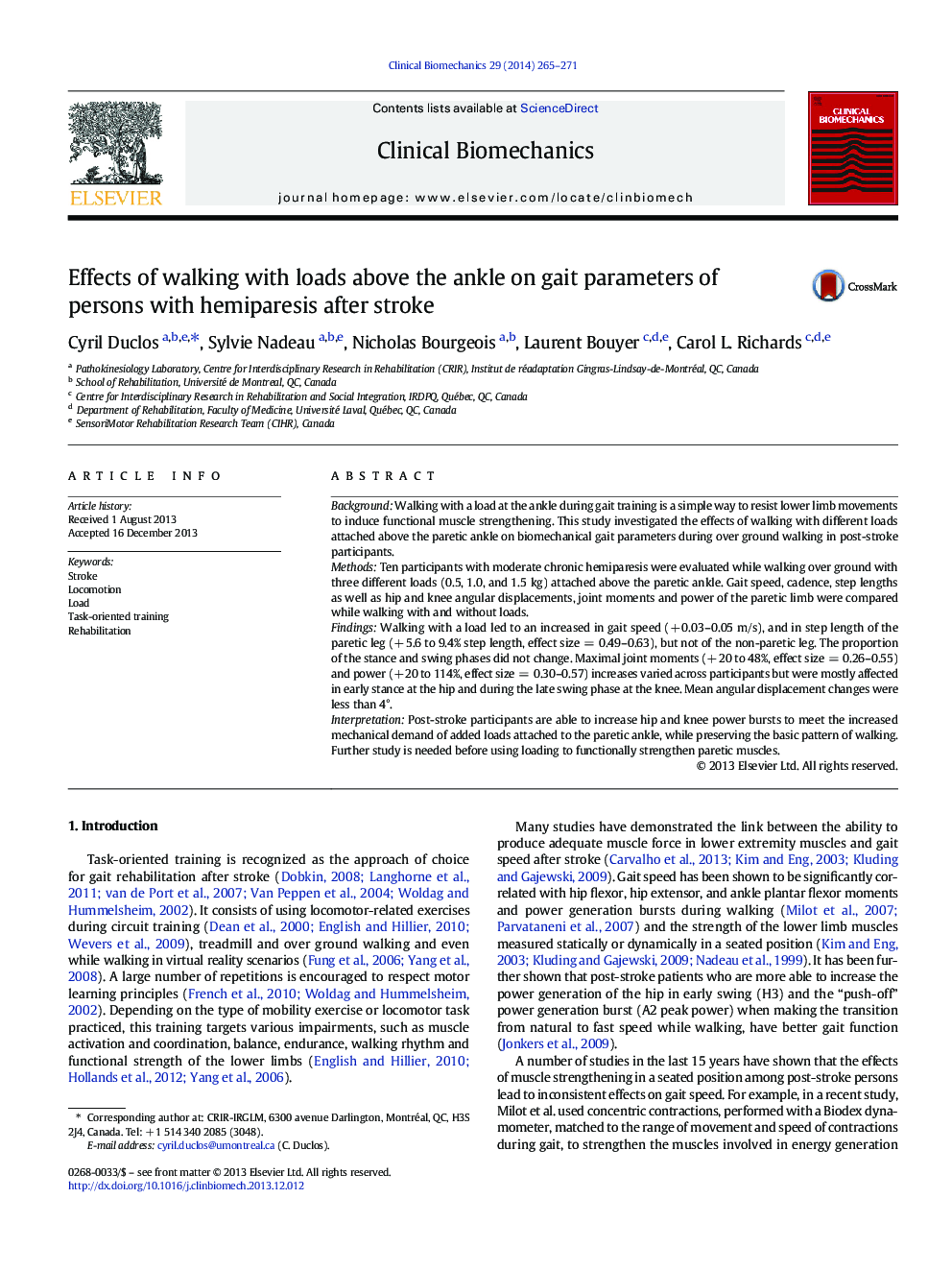| Article ID | Journal | Published Year | Pages | File Type |
|---|---|---|---|---|
| 4050278 | Clinical Biomechanics | 2014 | 7 Pages |
BackgroundWalking with a load at the ankle during gait training is a simple way to resist lower limb movements to induce functional muscle strengthening. This study investigated the effects of walking with different loads attached above the paretic ankle on biomechanical gait parameters during over ground walking in post-stroke participants.MethodsTen participants with moderate chronic hemiparesis were evaluated while walking over ground with three different loads (0.5, 1.0, and 1.5 kg) attached above the paretic ankle. Gait speed, cadence, step lengths as well as hip and knee angular displacements, joint moments and power of the paretic limb were compared while walking with and without loads.FindingsWalking with a load led to an increased in gait speed (+ 0.03–0.05 m/s), and in step length of the paretic leg (+ 5.6 to 9.4% step length, effect size = 0.49–0.63), but not of the non-paretic leg. The proportion of the stance and swing phases did not change. Maximal joint moments (+ 20 to 48%, effect size = 0.26–0.55) and power (+ 20 to 114%, effect size = 0.30–0.57) increases varied across participants but were mostly affected in early stance at the hip and during the late swing phase at the knee. Mean angular displacement changes were less than 4°.InterpretationPost-stroke participants are able to increase hip and knee power bursts to meet the increased mechanical demand of added loads attached to the paretic ankle, while preserving the basic pattern of walking. Further study is needed before using loading to functionally strengthen paretic muscles.
